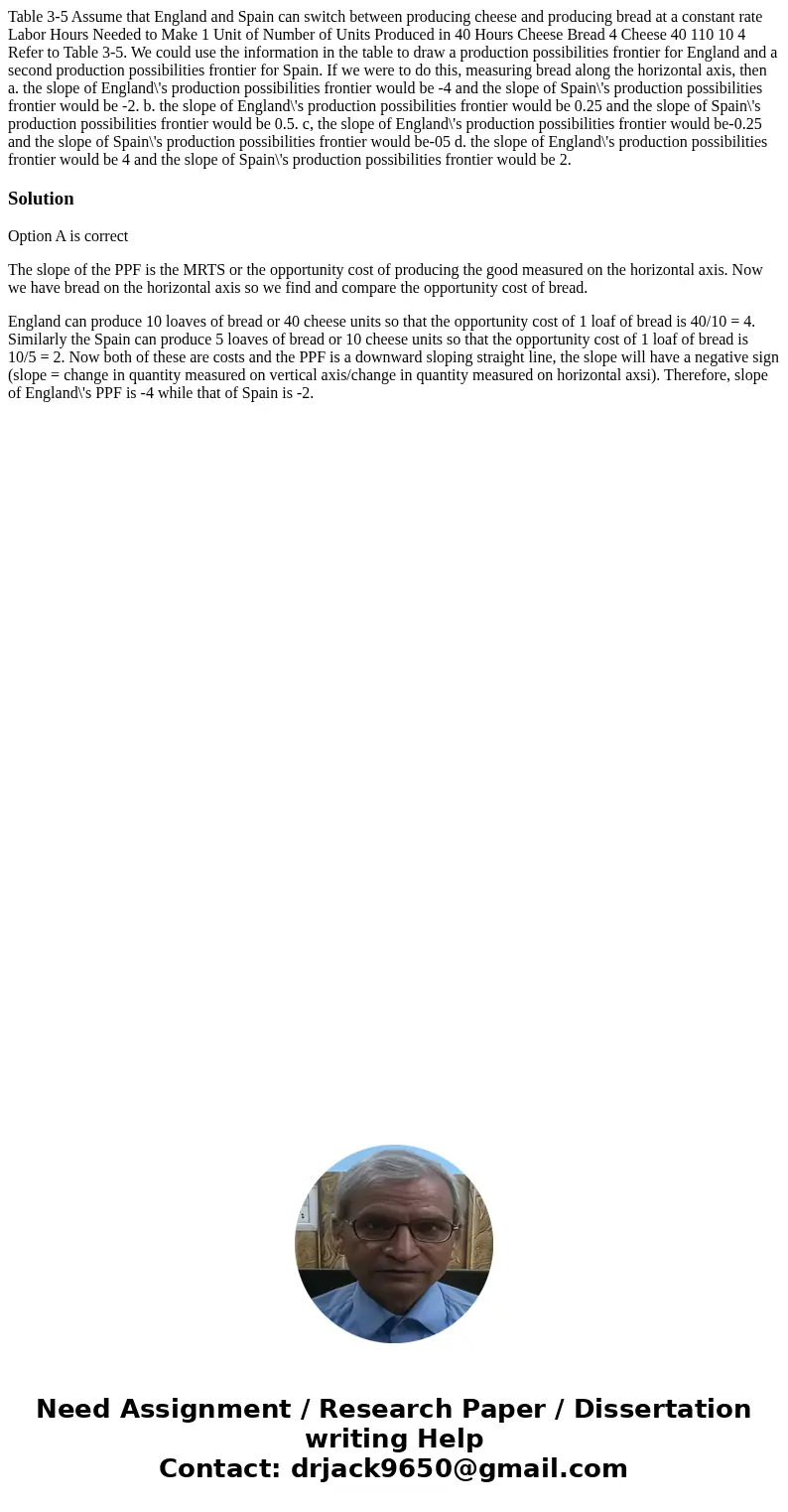Table 3-5 Assume that England and Spain can switch between producing cheese and producing bread at a constant rate Labor Hours Needed to Make 1 Unit of Number of Units Produced in 40 Hours Cheese Bread 4 Cheese 40 110 10 4 Refer to Table 3-5. We could use the information in the table to draw a production possibilities frontier for England and a second production possibilities frontier for Spain. If we were to do this, measuring bread along the horizontal axis, then a. the slope of England\'s production possibilities frontier would be -4 and the slope of Spain\'s production possibilities frontier would be -2. b. the slope of England\'s production possibilities frontier would be 0.25 and the slope of Spain\'s production possibilities frontier would be 0.5. c, the slope of England\'s production possibilities frontier would be-0.25 and the slope of Spain\'s production possibilities frontier would be-05 d. the slope of England\'s production possibilities frontier would be 4 and the slope of Spain\'s production possibilities frontier would be 2.
Option A is correct
The slope of the PPF is the MRTS or the opportunity cost of producing the good measured on the horizontal axis. Now we have bread on the horizontal axis so we find and compare the opportunity cost of bread.
England can produce 10 loaves of bread or 40 cheese units so that the opportunity cost of 1 loaf of bread is 40/10 = 4. Similarly the Spain can produce 5 loaves of bread or 10 cheese units so that the opportunity cost of 1 loaf of bread is 10/5 = 2. Now both of these are costs and the PPF is a downward sloping straight line, the slope will have a negative sign (slope = change in quantity measured on vertical axis/change in quantity measured on horizontal axsi). Therefore, slope of England\'s PPF is -4 while that of Spain is -2.

 Homework Sourse
Homework Sourse